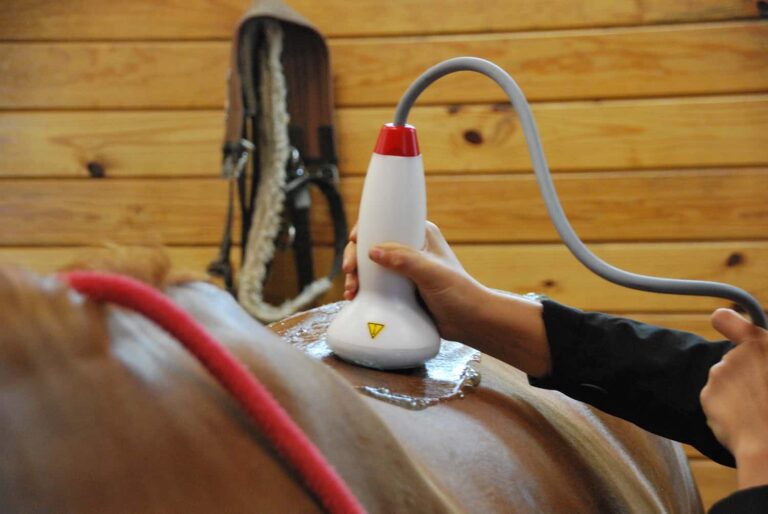
The “competitive environment” refers to the conditions within the industry of which a company is a part. In business terms, an industry is defined as a group of firms that creates products and services that are close substitutes for each other, or share a distinct commonality or focus, such as horses. Industries are composed of specific segments and strategic groups. Segments are similar types of businesses that operate within the industry, such as feed companies or pharmaceutical firms.
A strategic group is a set of firms that compete in a particular market across a similar set of competitive criteria. In our profession, the industry is the equine industry, the segment is equine veterinary and the strategic groups include the different types of equine practices such as racetrack, Western performance, general practice, etc.
Consideration of the state of each of these is necessary to be able to predict and create the future of a business with accuracy. After all, an industry can be in a state of slow growth while a segment within an industry can be in growth. Competitors in the growth segment would need to attend to the intentions of competitors in the slow-growth industry, as well as those in strategic groups. When demand is created, firms with resources will gravitate to that segment. An example is the automotive industry.
The automobile industry in North America has been mature (and thus experiencing stagnant growth) for some time. However, until recently, the SUV (sport utility vehicle) market has been in growth. Fifteen years ago, consumers had perhaps half a dozen models of SUVs from which to choose, including Jeeps, Broncos, Blazers and Suburbans. Now there are dozens of options for SUVs, ranging from the low-priced Kia to the super-premium Porsche.
In the equine veterinary industry, we have seen Thoroughbred breeding work wane but high-end sports medicine work increase. In response, some veterinary practices that previously had high percentages of their revenue from reproductive work have pivoted to sending a sports medicine team to Wellington in the winter months.
Economic Structure of the Equine Industry
The horse industry in the U.S. is highly fragmented and relatively large, similar in size to the garment industry or movie industry. Depending on the source, the horse industry is reported to generate between $2.5 and $100 billion each year in goods and services. There are estimated to be 7.1 million citizens participating in the equine industry in some capacity,1 and 1.4 million FTE employees.2 The economic contribution is well-balanced between various segments of the industry. There is approximately $32 billion generated from the recreation segment, $29 billion from the showing segment, $26 billion from the racing segment and $15 billion from other industry segments.3
Total expenditures for equine veterinary services in the U.S. were estimated at $825 million in 2011, a steady increase over the last 20 years. Mean spending by horse owners on veterinary services has shown slow growth over 15 years. Adjusted for the consumer price index, the mean expenditure per horse rose about 5% from 2009-2012.4 This has somewhat mitigated the effect of a 33% decrease in total numbers of horses nationwide.
There are 3,920 U.S. equine veterinarians, which represent 5.7% of the total number of vets employed in private practice. Equine practitioners are 50.6% male and 49.4% female.5 The equine veterinary industry is highly fragmented, and consistently about 40% of AAEP members are solo practitioners. After solo practitioners, the most common size of equine practice is that with two to three doctors. Calculations by the National Research Council indicated that only 122 new equine graduates are needed annually to maintain a steady state in the number of equine vets currently in practice in the United States.6
The equine veterinary industry is dominated by exclusively equine practices, but many horses in rural areas, particularly in the Midwest, are served by mixed practices. 7 In regions with intensive equine industry activity, the majority of services are provided by veterinarians that restrict their practices solely to equines.
Even though they work with a single species, the veterinarians serving the equine industry are highly fragmented in the type of care they provide, the type of practice structure they have, the amount of revenue they earn and the number of hours they work.
One commonality is the need to provide emergency care 24/7/365. With many horse owners without means of transport, and many emergencies involving minimally ambulatory patients, on-the-farm care is essential. This need is one of the most stressful and alienating aspects of equine practice, and leads to high attrition.8 However, clients rate emergency care in the farm setting as their top priority in choosing a veterinarian, according to a comprehensive study by the AAEP in 2012.9 This presents an opportunity for equine practices that can excel at providing that service.
The recession of 2008 affected the equine industry significantly. Horse ownership is financed with disposable income, and it is almost exclusively recreational. The equine veterinary industry is obviously heavily dependent on the health of the equine industry.
However, although horse owners’ costs increased, a 2015 survey by the American Horse Publications revealed that 88.6% of respondents expected to own or manage the same number of horses or more horses in 2016.10 The Merck-Henry Schein 2013 National Equine Veterinary Economic Study reported that respondents experienced a rebound of practice revenue in 2012, mirroring the improvement in employment, consumer confidence and stock market performance.11
The economic downturn led to fewer horses being produced by breeding operations. Records of breed registries of foals show that most breeds have been declining in the number of new registrations. Quarter Horses showed precipitous drops beginning in 2007, with some minor improvement noted recently. These decreases in breeding activity directly impact the equine veterinary industry due to decreases in the frequency of services needed.
When performing this type of analysis for your own practice, you should evaluate the current conditions locally, regionally and nationally.
Porter’s Five Forces Analysis
Five Forces analysis is a framework for analyzing the level of competition within an industry and for developing a business strategy. It investigates five forces that determine the competitive intensity, and therefore the attractiveness, of an industry.
By assessing the forces that drive competition, one can determine which “force” captures the value or where the power lies in a particular industry. Porter’s Five Forces is a simple but powerful tool for understanding where power lies in a business situation. This helps you understand both the strength of your current competitive position and the strength of a position into which you’re considering moving.
THE FIVE FORCES ARE:
Supplier Power: Here you assess how easy it is for suppliers to demand high prices. This is driven by the number of suppliers of each key product or service you need to run your business, the uniqueness of their products or services, their strengths and control over the market, the cost of switching from one to another, and so on. The fewer the supplier choices you have, and the more you need suppliers’ help, the more powerful your suppliers are.
Buyer Power: Here you ask yourself how easy it is for buyers (clients) to drive prices down. Again, this is driven by the number of buyers, the importance of each individual buyer to your business, the cost to individuals switching from your products and services to those of someone else, and so on. If the majority of your revenue comes from just a few buyers, then they are often able to dictate terms to you.
Competitive Rivalry: Here you consider the number and capability of your competitors (other veterinarians). If you have many competitors, and they offer equally attractive products and services, then you’ll most likely have little power in the situation. In that situation, buyers will go elsewhere if they don’t feel that they get a good deal from you. On the other hand, if no one else can do what you do, then you can often have tremendous strength.
Threat of Substitution: Substitutes allow your customers to find a different way of fulfilling a need that you currently fill, drawing money away from the market and further threatening an industry by creating price pressures and introducing new competitors. Internet companies have created a substitute for obtaining the medical supplies and pharmaceuticals in which many practices used to have a monopoly. Other substitutes are lay practitioners who offer dentistry and other services to horse owners. If substitution is easy and viable, this weakens your power.
Threat of New Entry: Power is also affected by the ability of people to enter your market. New entrants to an industry can impact prices and profit, and sometimes shift the rules of the game.
How many new entrants are attracted is affected by how difficult it is to enter the field. If it costs little in time or money to enter your market and compete effectively, or if there are few economies of scale in place, then new competitors can quickly enter your market and weaken your position. If there are strong and durable barriers to entry, then you might have a more favorable position and can take fair advantage of it.
medicine requires significant investment of time and money in education. In hospital-based practices, there is investment in infrastructure. However, once the degree is earned, there are fewer barriers to opening an ambulatory practice.
As you look at your own practice, you should utilize Porter’s Five Forces. By assessing the forces that drive industry competition, one can determine which “force” captures the value, or where the industry power lies for your individual situation.
Take-Home Message
Although the competitive environment is challenging, equine practice remains attractive for many veterinarians. Horses are an iconic symbol in the U.S., and horse owners are passionate and committed to their passion. Animals and their care are increasingly important to the public, and horses are considered family members and/or pets by 85% of owners.12 Owners value and respect their equine veterinarians, and most are not strongly price-conscious. Experienced equine veterinarians continue to earn generous salaries, and most practices remain profitable.
By analyzing the competitive position of your practice, you can make more effective strategic decisions about your future direction.
Resources
1. Horses. APHIS. Accessed 5/4/2014, aphis.usda.gov/animal_health/emergingissues/downloads/1horses.pdf
2. American Horse Council, “National Impact of US Horse Industry” Accessed 4/15/14, horsecouncil.org/national-economic-impact-us-horse-industry
3. American Horse Council, “National Impact of US Horse Industry” Accessed 3/30/17, horsecouncil.org/national-economic-impact-us-horse-industry
4. AVMA, “US Pet Ownership and Demographics Sourcebook” (Schaumburg: AVMA, 2012), 102.
5. AVMA Market Research Statistics US Veterinarians -2016. Accessed 3/30/17, avma.org/KB/Resources/Statistics/Pages/Market-research-statistics-US-veterinarians.aspx
6. National Research Council, Workforce Needs in Veterinary Medicine (Washington: National Academies Press, 2012), 54.
7. National Research Council, Workforce Needs in Veterinary Medicine (Washington: National Academies Press, 2012), 50.
8. AVMA, “2013 US Veterinary Workforce Study: Modelling Capacity Utilization” (Schaumburg: AVMA, 2012), 29.
9. AAEP “Horse Owner/Trainer Veterinary Services Survey 2012 Report of Findings”. Accessed 5/9/14, touch. aaep.org
10. 2015 AHP Equine Industry Survey. 7/31/15. Accessed 3/30/17. Americanhorsepubs.org/equine-survey/2015-equine-survey/
11. Andy Clark & Ed Boldt, “National Equine Veterinary Economic Study 2013” (2013 AAEP Convention)
12. AVMA, “US Pet Ownership and Demographics Sourcebook” (Schaumburg: AVMA, 2012), 42.




